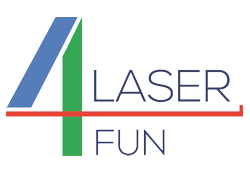Results of the work in the Laser4Fun project has been published as:
A. Garcia-Giron, J.M. Romano, A. Batal, B. Dashtbozorg, H. Dong, E. Martinez Solanas, D. Urrutia Angos, M. Walker, P. Penchev, S.S. Dimov (2019) Durability and Wear Resistance of Laser-Textured Hardened Stainless Steel Surfaces with Hydrophobic Properties, Langmuir 35(15) 5353-5363. doi:10.1021/acs.langmuir.9b00398.
Abstract
Hydrophobic surfaces are of high interest to industry. While surface functionalization has attracted significant interest, from both industry and research, the durability of engineered surfaces remains a challenge, as wear and scratches deteriorate their functional response. In this work, a cost-effective combination of surface engineering processes on stainless steel was investigated. Low-temperature plasma surface alloying was applied to increase surface hardness from 172 to 305 HV. Then, near-infrared nanosecond laser patterning was deployed to fabricate channel-like patterns that enabled superhydrophobicity. Abrasion tests were carried out to examine the durability of such engineered surfaces during daily use. In particular, the evolution of surface topographies, chemical composition, and water contact angle with increasing abrasion cycles were studied. Hydrophobicity deteriorated progressively on both hardened and raw stainless steel samples, suggesting that the major contributing factor to hydrophobicity was the surface chemical composition. At the same time, samples with increased surface hardness exhibited a slower deterioration of their topographies when compared with nontreated surfaces. A conclusion is made about the durability of laser-textured hardened stainless steel surfaces produced by applying the proposed combined surface engineering approach.
